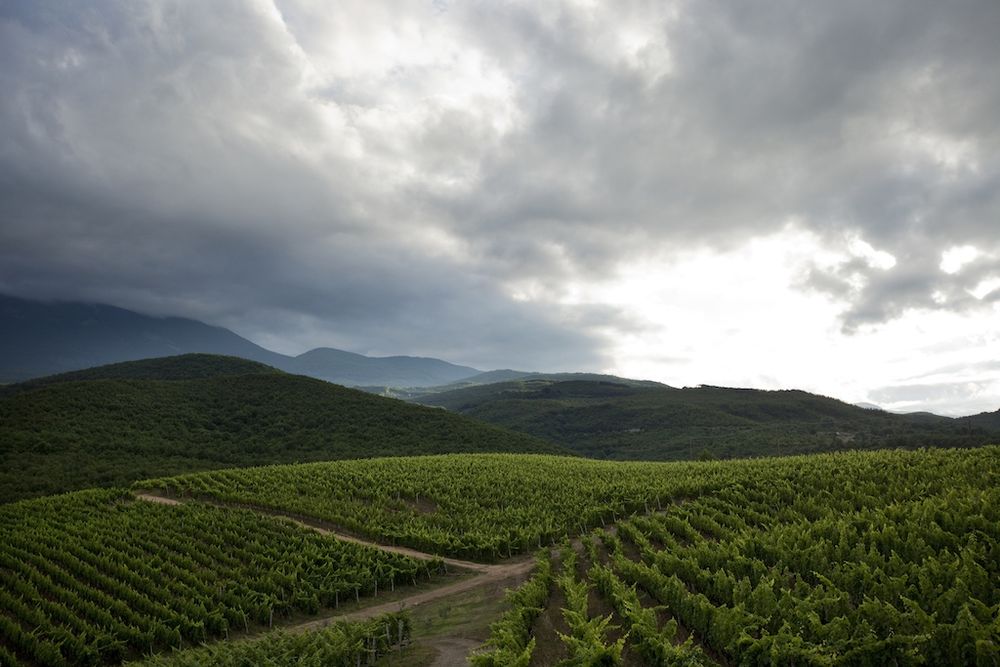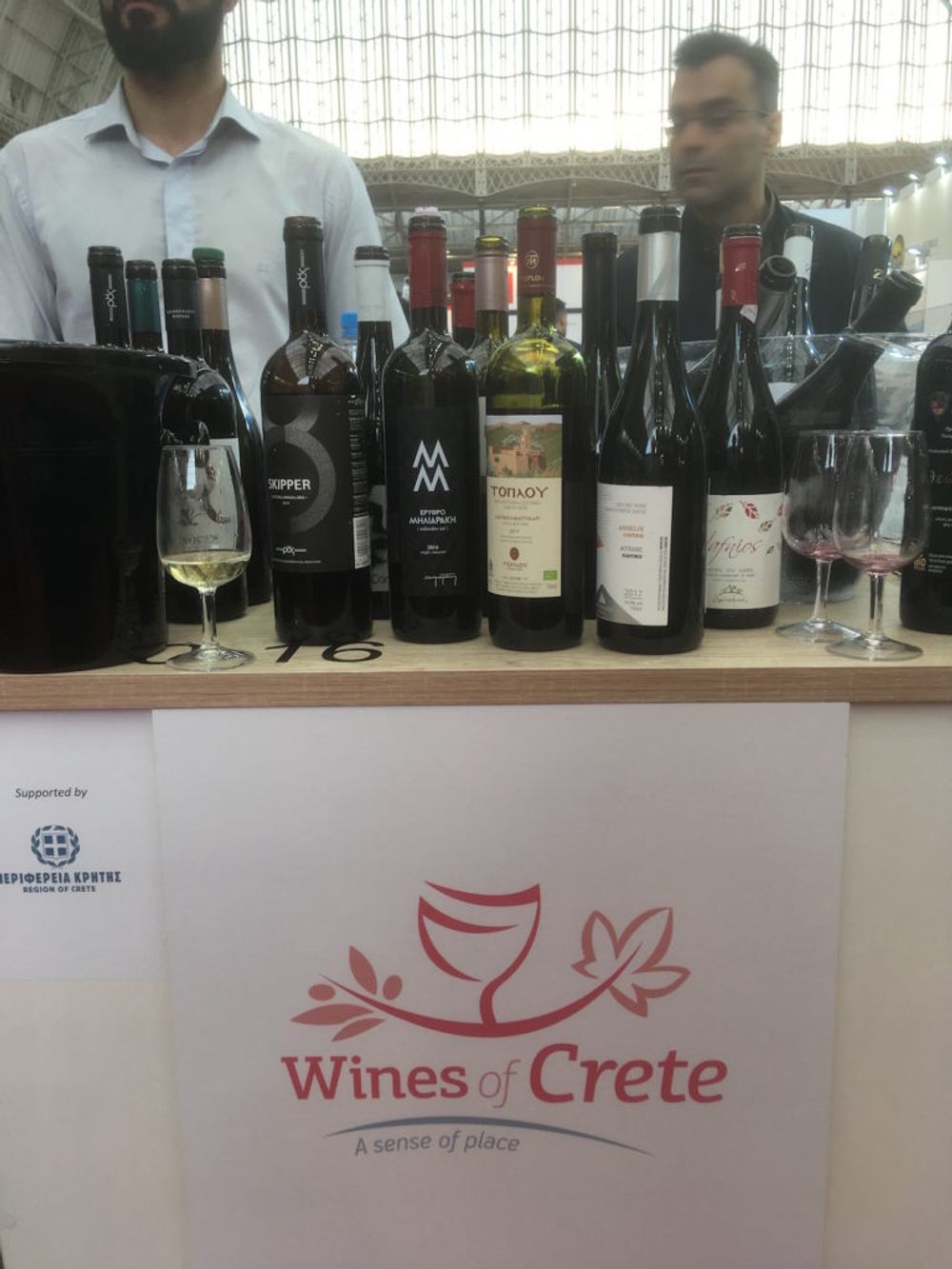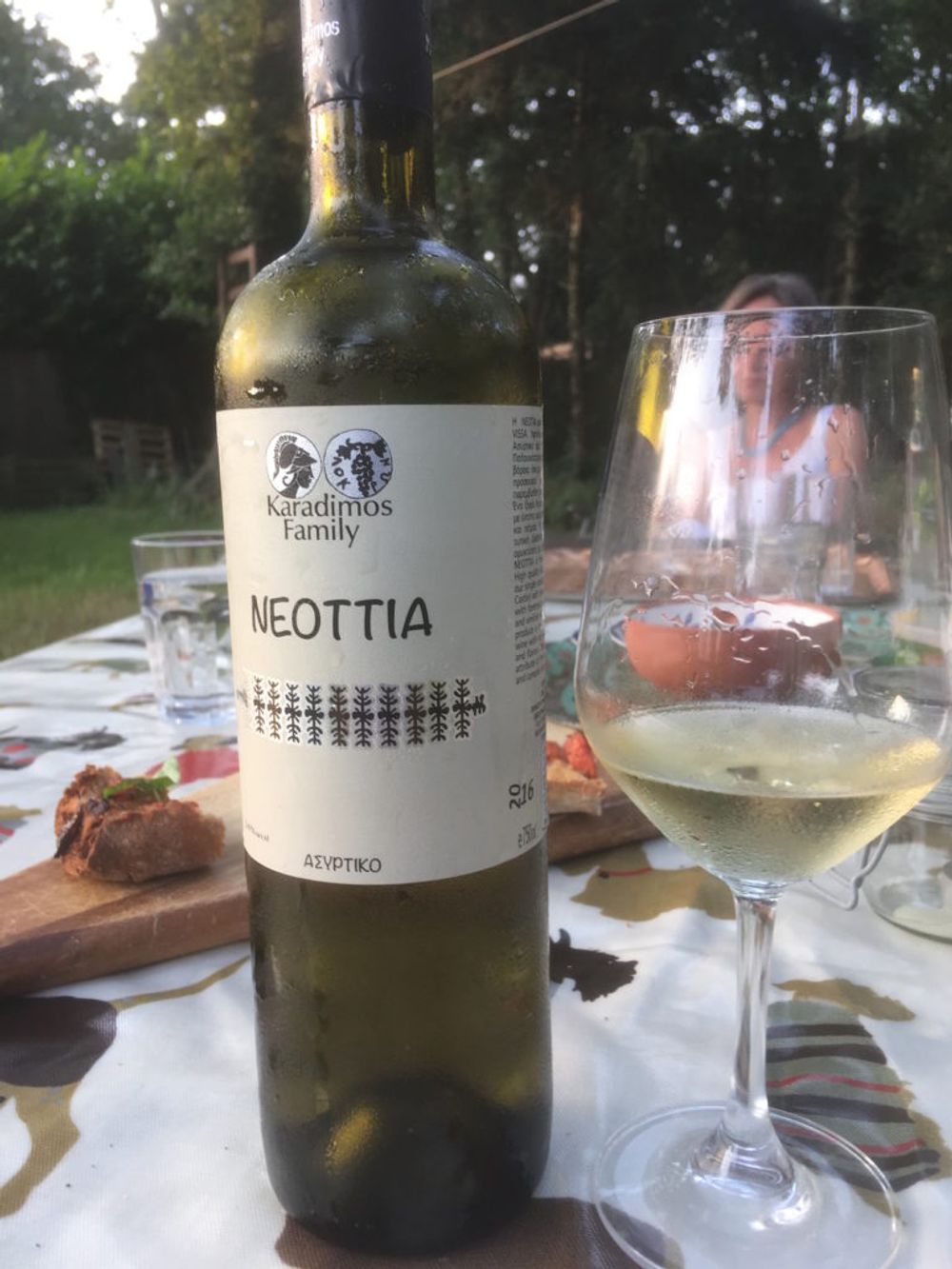Quality is being driven by independent producers with limited production who export successfully most of what they produce.
In the days after this year’s London Wine Fair, when people asked me how I got on, I wasn’t quite sure how to answer. It wasn’t that LWF wasn’t good – on the contrary, I thought it was exceptionally well-organised, on a human scale with a great friendly atmosphere and a good range of exhibitors and wines – but that I didn’t get to see as much as I would have liked.
I blame the Greeks.
OK, I managed some time at the Wines of Georgia stand (great masterclasses by Sarah Abbott and I thought, much improved wines), at Wines of Romania and a few other emerging region’s stands, but most of my time was spent in and around the vast Wines of Greece stand on the ground floor. Perhaps because it was their first time at the LWF, they really pulled out the stops with wines from across the mainland and islands – notably Crete and Kefalonia. No fewer than 40 producers were on hand, all keen to highlight Greece’s impressive range of indigenous varieties.

“Native varieties really are the future for Greece in export terms; people aren’t interested in varieties they can try from elsewhere, they really want to experience local,” says Kandylis.
The LWF Greek theme was reinforced by an impressive masterclass by Yiannis Karakasis MW and Terry Kandalis, head sommelier at 67 Pall Mall, where they showed 12 wines showcasing Greece’s indigenous varieties, most of which many in the audience had clearly never tried. OK, most knew Assyrtiko, because the variety – originally from Santorini but now grown successfully but differently in other parts of Greece by such producers as Gaia and Lyrarakis – has become an international success story. Vineyard prices on the volcanic island have reached Napa levels, little wonder with just 20 producers fighting over the island’s limited grape stock.
But how many had tasted a Moscofilero, originally from the Peleponnese, with its tangy, floral Muscatty flavours? Or a herbal, rounded, Malagousia, originally from northern Greece and rescued from the dead 30 years ago by producers like Evangelos Gerovassiliou? Probably more than those who had tried a Vidiano from Crete or more obscurely still, a Robola from Kefalonia – unless, of course, they had recently vacationed in either place.

The canniest winemakers are recognising that foreign wine drinkers are more likely to be interested in native varieties rather than trying, say, a Greek Cabernet or Syrah.
The fact that these wines are now becoming available outside Greece says much about the renewed vitality of the Greek wine scene – which since that country’s devastating economic crisis had had to find a living outside its shores, significantly upping quality in the process – and about the UK trade’s thirst for the unusual and authentic. And many of these wines are truly labours of love: the Robola, a wonderfully rich, almost sensual take on the variety, was produced by Petrakopoulos Vineyards in volumes of… wait for it… 350 bottles.
“Native varieties really are the future for Greece in export terms; people aren’t interested in varieties they can try from elsewhere, they really want to experience local,” says Kandylis.
The Assyrtiko offered at this tasting – Tselepos Santorini 2014 – was chosen because it was made from 50-100 year old koulara or basket vines (some of the vines on the island are believed to date back up to 400 years), is small volume (around 12,000 bottles) and had the typical fresh zippy salinity that Santorini Assyrtiko offers. But also because of the date, reflecting Kandylis’ belief that much of the Assyrtiko we drink is too young.
“You really need a bit of age to bring out the best in the variety,” he says.
With Assyrtiko now well established in people’s minds and on restaurant lists as the go-to Greek variety, what else should the country’s wine industry be doing? Karakasis reckoned it should probably try and focus on pushing another variety in its exports, and noted that Moscofilero is doing well in North American markets, boosted by its mellow, Muscat-style characteristics that makes it an ideal all-rounder and the fact it generally is much cheaper than Assyrtiko.

Part of the massive Wines of Greece stand at this year’s London Wine Fair
People in the UK are latching onto the improved quality of Greek viticulture
It is a sign of the growing UK interest in Greek wine that increasingly these wines are now available in the UK trade, as consumers become more aware of the huge qualitative advances made in the Greek wine industry over the past year. Improved viticulture has enabled winemakers to work much better with native varietals that, even 20 years ago, were regarded as uncommercial and of limited likely interest to foreign consumers.
Buyers in the trade are upbeat and say the current renaissance has fed into increased sales and interest, with producers keen to boost exports as difficult domestic economic conditions persist.
“The modern Greek wine story started in the mid 1990s and reflects advances in technology, but also older vine age and better know-how. This has enabled winemakers – many of whom learned their craft abroad – to return and make the best of Greece’s local varieties,” says Steve Daniel, senior wine buyer at Hallgarten & Novum Wines.
The transformation has so far been mainly a whites story, led by mainly small and medium sized producers – typically making between 500,000-800,000 bottles. However, reds are getting better with winemakers getting a better grip on what works and what doesn’t – and, of course, on what sells, with the canniest recognising that foreign wine drinkers are more likely to be interested in native varieties rather than trying, say, a Greek Cabernet or Syrah, although the latter in particular does do well in Greece.
“Quality is being driven by independent producers with limited production who export successfully most of what they produce… Most indigenous grape varieties are made extremely well by a handful of growers who show the way to others,” says Sebastian Payne, senior buyer for The Wine Society.

The Karadimos brothers have been making quite a stir in Greek wine circles, and with good reason
Here are six of the some of the most interesting Greek whites in the UK trade right now.
Ocean 2018, Idaia Winery, Crete is a delicious, light (12.5% alcohol) but full flavoured wine made with 100% Thrapsathiri (a delicate, perfumed variety) grown in mountainous lime-clay terrain in Dafnes, near Heraklion. Very moreish and also very well priced, from an innovative husband and wife team who focus exclusively on Cretan native varieties. (Hallgarten & Novum Wines).
Malagousia Single Vineyard Epanomi 2018, Ktima Gerovassiliou. Malagousia now accounts for some 45% of plantings at this estate outside Thessaloniki. This, the flagship single variety wine, offers a full round palate of peach, pear and grapefruit flavours, with 25% oak ageing allowing the full breadth of the variety to come across. (Hallgarten & Novum Wines)
Assyrtiko Wild Ferment 2018, Gaia Wines. Under the ownership of Yiannis Paraskevopoulos, Gaia (which translates as Mother Earth) has established itself one of the best producers on Santorini and its range of Assyrtiko is impressive. The main wine, Thalassitis, is bone dry, so Wild Ferment, grown in a different vineyard, allows more aromatic expression. Grapes undergo 12 hours of skin contact before half are kept in stainless steel and the other half are put into new 225 litre barrels (made from three different types of oak) after which fermentation develops at its own pace. The result is a delicious, layered and complex wine with a pleasing salinity that shows the extraordinary potential of the variety. (Hallgarten & Novum Wines)
Assyrtiko 2018 Florina, Kir-Yianni. About as different from Santorini Assyrtiko as you can get, Kir-Yianni’s wine describes itself as a ‘high altitude wine’: with reason, as the Florina vineyard in north-west Greece is 700m above sea level. This is a full flavoured wine, with lots of peach and apricot flavours on the palate, but also very fresh. (Enotria & Coe).
Neottia 2016 Assyrtiko, Karadimos Family. The Karadimos brothers have been making quite a stir in Greek wine circles, and with good reason: producing just 20,000 bottles a year, in Atalanti in Central Greece, their wines are 100% organic and 100% original. This full-bodied single-vineyard Assyrtiko provides yet another stylistic take on Greece’s best known white variety; 14% alcohol, it is very rounded – almost like a new world Viognier – but with pleasing acidity and freshness. This is actually the baby brother of the flagship Alba Vissa Assyrtiko, but the high quality of the grapes and the winemaking really shows through. Fantastic value at £13 from an importer specialising in small and innovative producers (Southern Wine Roads).
Dafni 2017, Domaine Lyrarakis, Crete. In London at Berry Bros & Rudd earlier this year, Basil Lyrarakis showed the full range of his native varietal wines including a white Plyto, Vidiano and Thrapsathiri and some red varieties as well (Kotsifali and Liatiko). Most people there liked this best and I can see why; Dafni, an ancient variety which translates as “bayleaf” was rescued by Lyrarakis from extinction around 23 years ago. The wines have deliciously appealing bay leaf aromas coupled with white peach and pear flavours. Very distinctive. (BBR/FMV).
Next week Justin Keay will be looking at which red wines you need to be aware of and why Xinomavro is the variety with the X factor in the Greek wine revival.










































